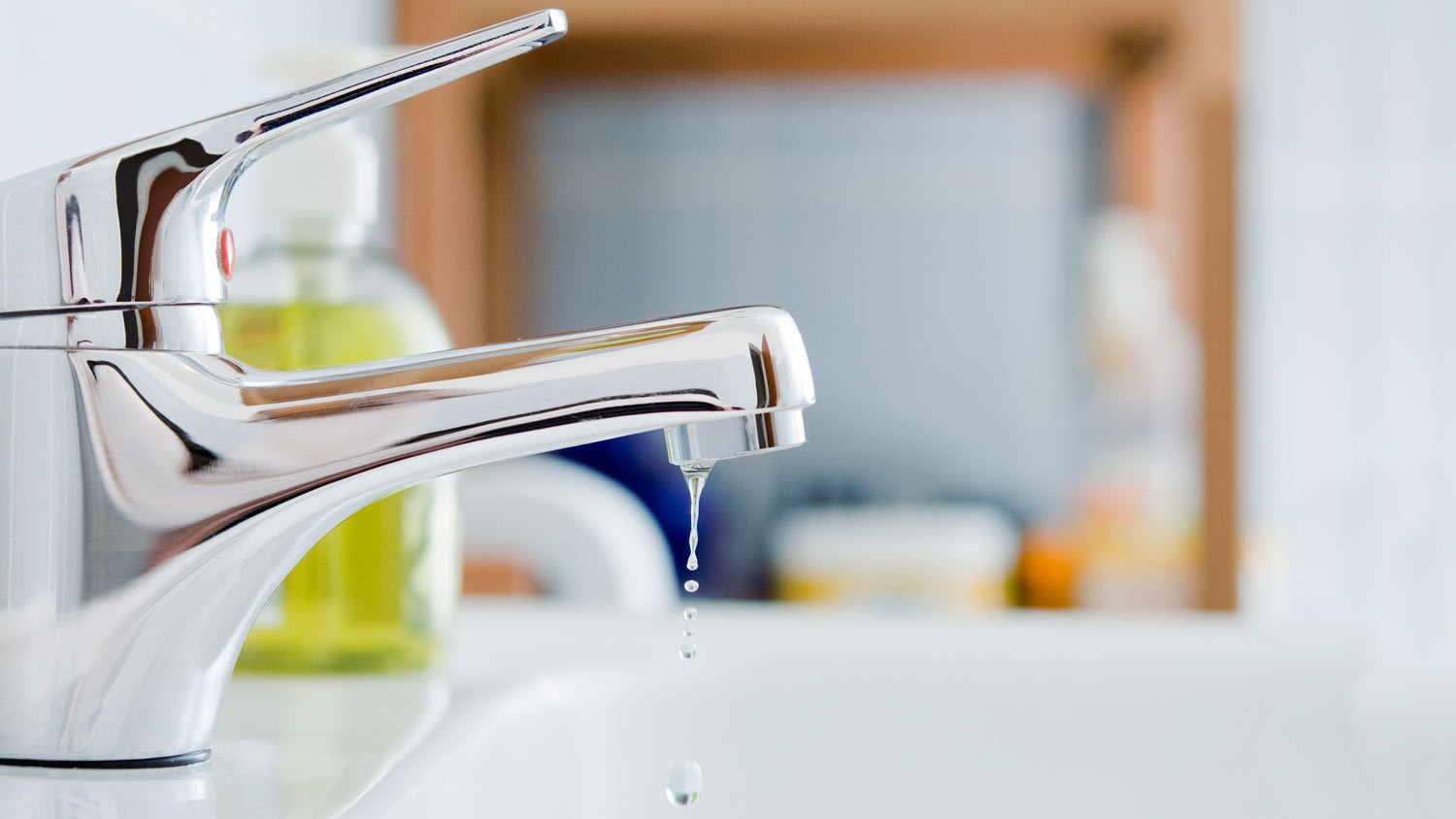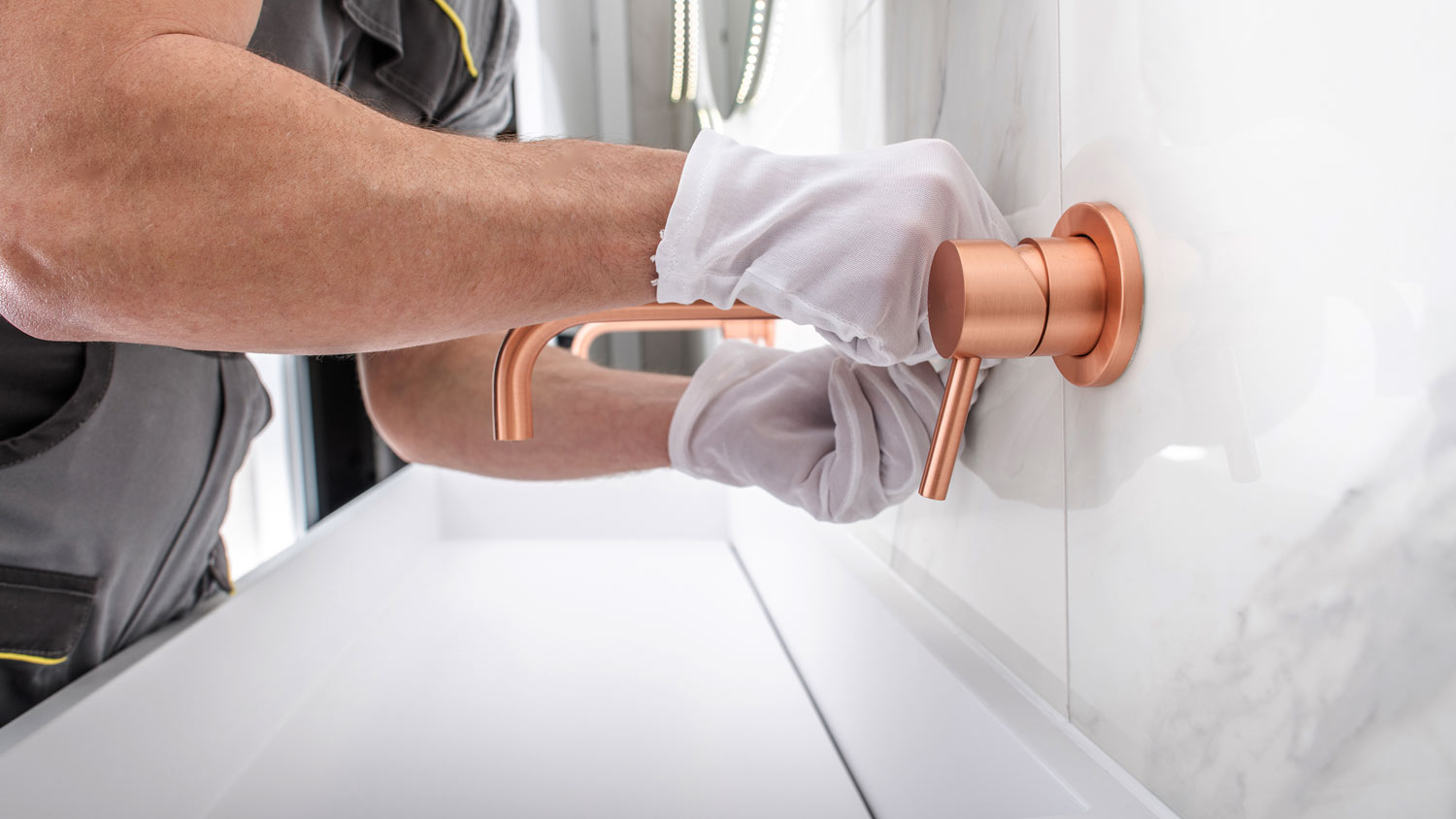
Building a laundry room addition to your home adds value and functionality. Your laundry room addition cost will depend on size, materials, and other factors.
Expect nearly two decades of good use


A faulty faucet is more than just an inconvenience—it can lead to higher water bills, damage to your bathroom, and even unhealthy water. That's why it's important to know what to do when things start to go south. Knowing how long bathroom faucets last, along with common issues, will help you understand whether it's time to repair or replace your fixture.
When maintained properly, bathroom faucets last 15 to 20 years. Regular maintenance includes wiping down the faucet with a microfiber cloth and soap, removing buildup with a 1:1 vinegar and water solution, and cleaning your aerator monthly.
Sometimes, cheaper faucets don’t last as long because they’re made with low-quality materials. Your faucet might have a manufacturer’s defect that you didn’t notice until after the warranty expired. In these instances, your faucet’s life span will be shorter than usual, and your best bet is to replace the faucet.

When making the call on whether to repair or replace your bathroom faucet, you should consider the original price you paid, repair quotes, and the cost to replace a bathroom faucet. But even if repairing is less expensive, you should consider replacing the faucet if you’ve repaired it multiple times.
Here are some common faucet problems to give you an idea of how easy or difficult the issue is to fix.
A constant dripping from your faucet is often due to a problem with the handle, like a broken valve, worn-out or corroded O-rings and washers, or loose screws. If you made repairs previously and keep having the same issue, first make sure the problem isn’t caused by something else like high water pressure.
Leaking faucet handles can cause extensive water damage to your countertops, cabinets, walls, and flooring. If you don’t clean the area regularly, you’ll also have a mold or mildew problem. Leaking handles are caused by a worn-out gasket, washer, or O-ring. For two-handle faucets, check if you need to replace the cartridge.
There are many reasons why your faucet is sputtering, and the most common is a clogged aerator. You can fix this by cleaning or installing a new aerator. Otherwise, you might have a faulty faucet cartridge. Note that the problem might be something other than your faucet, like a cracked pipe or an issue with your water heater, so you may need to get a pro involved.
If your faucet handles squeak when you use them, the faucet threads might be worn out. You can use plumber’s grease or petroleum jelly to temporarily take care of the sound, but you’ll eventually need replacement parts or a new faucet.
The sounds might also be due to buildup on the faucet stem. You can try cleaning the buildup to see if that helps the squeaking sounds go away.
Although you might assume corrosion means something is wrong with the fixture, that’s not always the case. It can happen if you use harsh cleaners, don’t clean your faucets regularly, or let toothpaste and mouthwash residue build up. Sometimes, it can be due to hard water in your area or a leak.
You can remove corrosion by using a 1:1 vinegar and water mixture. Pour the mixture on the corroded areas or use a towel soaked in the mixture to wipe down the faucet. After a few minutes, rinse the area. If the cleaning method doesn’t work and the faucet is beyond saving, it’s best to replace it.
Mold growth on your faucet means there’s a leak, somewhere in the bathroom. You might also get mold growth in your aerator, which can go undetected if it’s not regularly cleaned.
You’ll need to find the source of the issue—instead of just replacing the faucet. You can remove mold by spraying it down with white vinegar. Then, let it sit for an hour, and rinse with hot water. You can technically clean a moldy aerator by soaking it overnight in a cup of white vinegar, but since they only cost a few dollars, it’s easier to replace them.
When your faucet has rust or mineral deposits, it’s usually due to hard water. To solve this pesky problem, install a water softener and flush your water heater tank annually. You can use cleaners designed to remove rust and mineral deposits, but to prevent damage, make sure the cleaners are compatible with your faucet material.
If you don’t have hard water and the faucet is fairly new, the problem could be that your current faucet was manufactured with lower-quality materials. In this case, it’s best to get a replacement.
But if you have rusty water, you should call a plumber immediately for an inspection.
When your faucet is nearing the 15- to 20-year mark, you should replace it, whether you’re having issues with it or not. A new faucet will help you prevent costly repairs and keep the bathroom looking updated.

Here are some reasons why you should get a brand-new faucet instead of fixing your old one:
Some faucets aren’t repairable or aren’t worth repairing.
A high-quality faucet will last 15 to 20 years.
A brand-new faucet means you’ll likely go a long time without necessary repairs.
A new faucet may better match your space and keep the bathroom looking updated.
It’s a chance to switch to a new faucet type.
Some new faucets are eco-friendly and can help cut down on water usage.
It’s a cost-effective project that doesn’t take too much money or time.
Handy DIYers can tackle bathroom faucet replacement themselves and save $130 to $350 on labor costs. You’ll want to be confident in your abilities because a poor faucet installation can cause issues down the road, like wobbly faucets, stuck handles, malfunctioning sprayers, and low water pressure. These can lead to water leaks and poor usability.
If you’re not keen on the DIY route or want to switch faucet types, you may spend $170 to $360 for a replacement by hiring a faucet installer near you. The cost of the new faucet will be a main factor in the overall cost.
From average costs to expert advice, get all the answers you need to get your job done.

Building a laundry room addition to your home adds value and functionality. Your laundry room addition cost will depend on size, materials, and other factors.

Remodeling your bathroom can add significant value to your home. The cost of your bathroom remodel in Los Angeles, CA, will depend on size, fixtures, materials, labor, and other factors.

Bathroom cabinet costs can easily skyrocket. Take a look at these important cost factors and considerations to help you stay within your budget.

Working from home is only productive if you have a dedicated office space. Learn the cost to build a home office, from materials to labor rates.

Make choosing your toilet seat a cinch using this guide. Learn about different toilet seat types, shapes, materials, and features.

Replacing or installing an attic ladder provides a safe way to access your attic. Learn what factors affect attic ladder installation cost to help you budget.